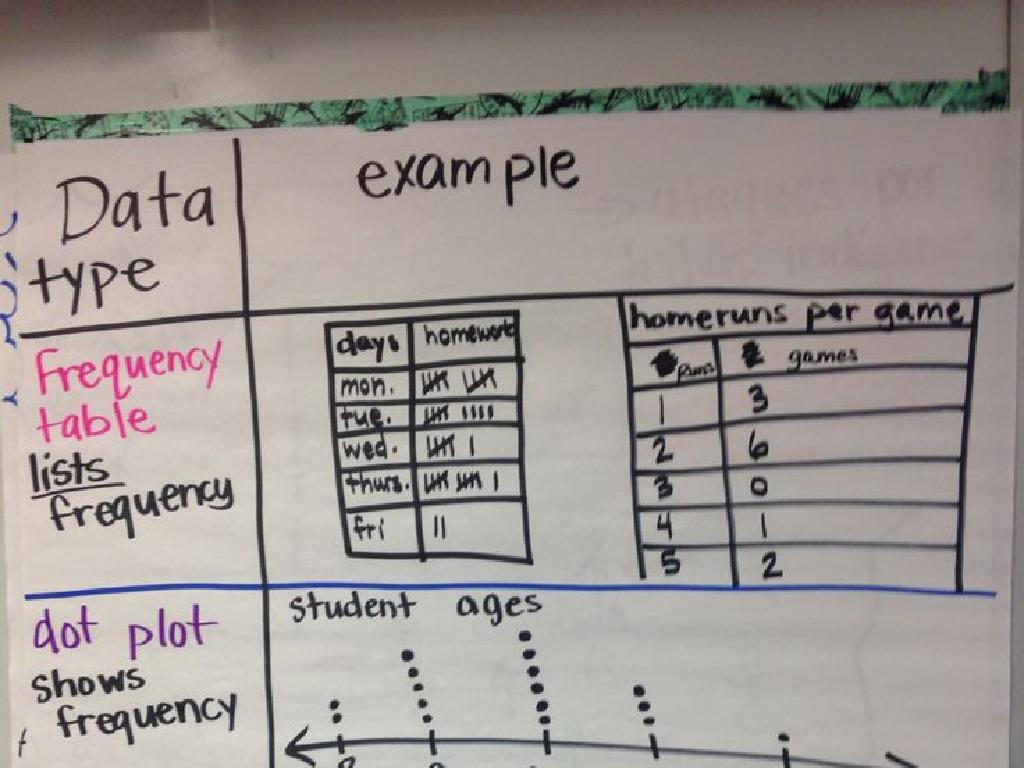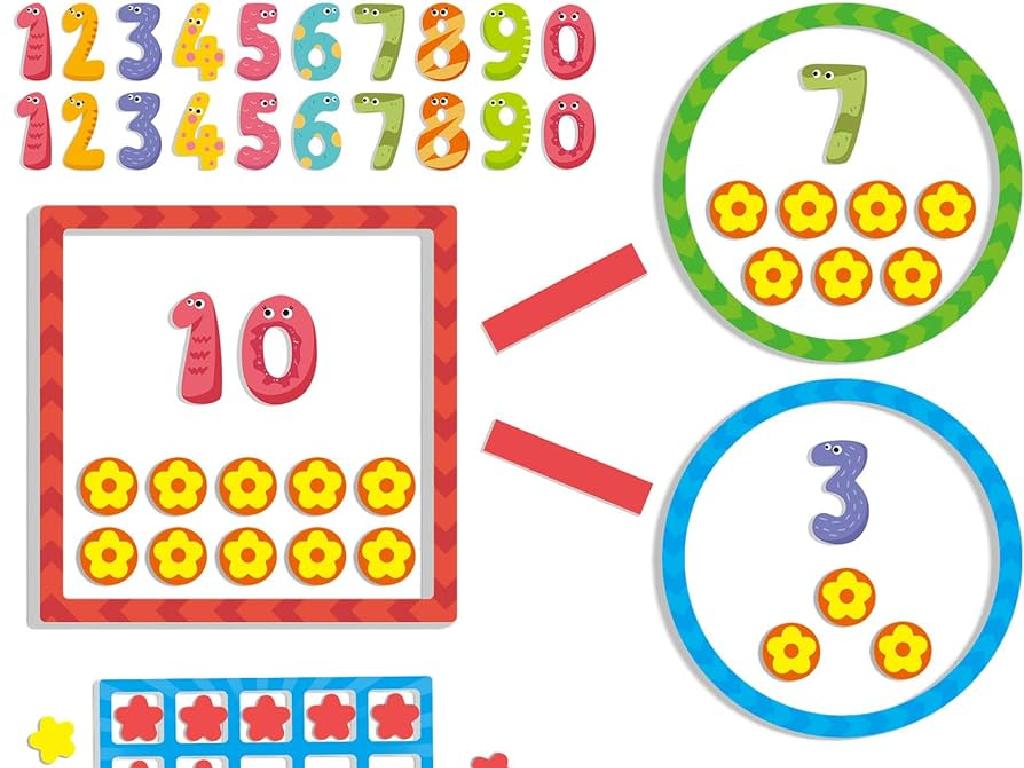Rules And Laws
Subject: Social studies
Grade: First grade
Topic: Civics
Please LOG IN to download the presentation. Access is available to registered users only.
View More Content
Welcome to Civics: Rules and Laws
– Greet the class with a cheerful good morning!
– Today’s topic: learning about rules and laws
– Think about why rules are important
– Rules help us stay safe and live together peacefully
– Get ready to discuss and share ideas
– We’ll talk about rules at home, school, and in the community
|
This slide is designed to introduce first graders to the concept of rules and laws in a civics class. Start the class with a warm greeting to create a welcoming atmosphere. Explain that the day’s lesson will focus on understanding what rules and laws are and why they are important in our daily lives. Encourage the students to think about the role of rules and why they might be necessary, prompting them with examples like rules at home, in the classroom, or in the community. This will set the stage for an interactive discussion where students can share their thoughts and learn from each other’s perspectives. The goal is to help them recognize that rules are there to help everyone get along and stay safe.
Understanding Rules
– Rules are like instructions
– They guide us to behave properly
– Rules exist at home and school
– Like cleaning up toys or raising hands to speak
– Rules keep our community safe
– Stop signs and lines at the store are rules too
– Think of a daily rule you follow
|
This slide introduces the concept of rules to first-grade students. Begin by explaining that rules are instructions that help us know the right way to act. Give examples of simple rules they might follow at home, like cleaning up toys after playing, or in school, such as raising their hand to speak. Highlight that rules are also important in the community, like stopping at a stop sign or waiting in line at the store. Encourage the children to think of a rule they follow every day and be ready to discuss it. This will help them connect the concept of rules to their daily lives and understand the importance of following them.
Why Do We Have Rules?
– Rules keep us safe
– Like wearing helmets when biking
– Rules help us be friendly
– Like sharing toys with classmates
– Rules protect our school
– Like cleaning up after art class
– Rules care for our community
– Like recycling and planting trees
|
This slide aims to teach first-grade students the importance of rules in their daily lives. Start by explaining that rules are like instructions that help everyone know what to do. Compare rules to a game where following them makes the game more fun. Relate the concept of safety to wearing helmets or holding hands when crossing the street. Emphasize kindness and cooperation by sharing and taking turns. Highlight the importance of taking care of their school environment by cleaning up and respecting property. Extend the idea of rules to the larger community by discussing how recycling and planting trees help everyone. Encourage students to think of other rules they follow at home or in school and why those rules are important.
What Are Laws?
– Laws are important rules
– Like rules in school, laws are for everyone
– Made by leaders for safety
– Leaders decide on laws to protect us
– Laws help treat everyone fairly
– Fairness is key, so laws apply to all people
– Examples: seatbelts, red lights
– Wearing seatbelts keeps us safe in cars, stopping at red lights prevents accidents
|
This slide introduces the concept of laws to first-grade students by comparing them to rules they are familiar with, like those in school or at home. Emphasize that laws are made by leaders such as government officials and are designed to keep everyone safe and to ensure fairness. Use simple, relatable examples such as wearing seatbelts for safety and stopping at red lights to prevent accidents. These examples will help students understand the practical applications of laws in everyday life. Encourage the students to think of other examples of laws they know and discuss why they are important.
Rules vs. Laws: Understanding Civics
– Rules are guidelines we follow
– Like taking turns, being quiet in class
– Laws are official rules by the government
– Like stopping at a red light, paying taxes
– Consequences for breaking laws are serious
– You might get a ticket or go to court
– Rules and laws help keep order
|
This slide aims to help first graders understand the concept of rules and laws in their community. Start by explaining that rules are made by people or groups we know, like our families or teachers, and they help us know what is expected of us. Then, describe laws as rules made by the government that everyone in the country must follow. Highlight that while breaking rules can lead to time-outs or extra chores, breaking laws can result in much more serious consequences, such as fines or other legal actions. Emphasize that both rules and laws are important for keeping our communities safe and organized. Use examples that are relatable to their daily experiences, such as classroom rules or traffic laws.
Why Should We Follow Rules and Laws?
– Rules keep us safe
– Like wearing helmets when biking
– They help us live together
– Like taking turns on the playground
– Fair treatment for everyone
– Everyone plays by the same rules
– Following them is important
|
This slide aims to teach first graders the importance of rules and laws in their daily lives. Start by explaining that rules are like instructions that help protect us, such as wearing helmets for safety while biking. Emphasize that laws help us get along with others, like waiting for our turn on the playground, which prevents arguments and fights. Highlight that fairness is key, and rules ensure that everyone is treated equally, like in games where everyone follows the same rules. Reinforce the concept that following rules and laws is essential for a harmonious and safe community. Use simple language and real-life scenarios that first graders can relate to, and encourage them to think of other rules they follow at home or in school.
Class Activity: Creating Our Classroom Rules
– Let’s make rules together!
– Think of learning & kindness rules
– What rules make a happy, respectful classroom?
– Write our rules on paper
– Display rules in our classroom
– Our rules will remind us how to behave every day!
|
This activity is designed to engage students in the process of creating a positive classroom environment. Start by explaining the importance of rules and how they help everyone learn and be kind. Facilitate a brainstorming session where students suggest rules they believe are important. Guide them to think about rules that promote respect, sharing, and listening to each other. Once the rules are agreed upon, have the students write them out neatly. Finally, place the rules somewhere visible in the classroom to serve as a daily reminder. Possible activities for different students could include drawing pictures of the rules, acting out the rules, or even creating a rules song.






